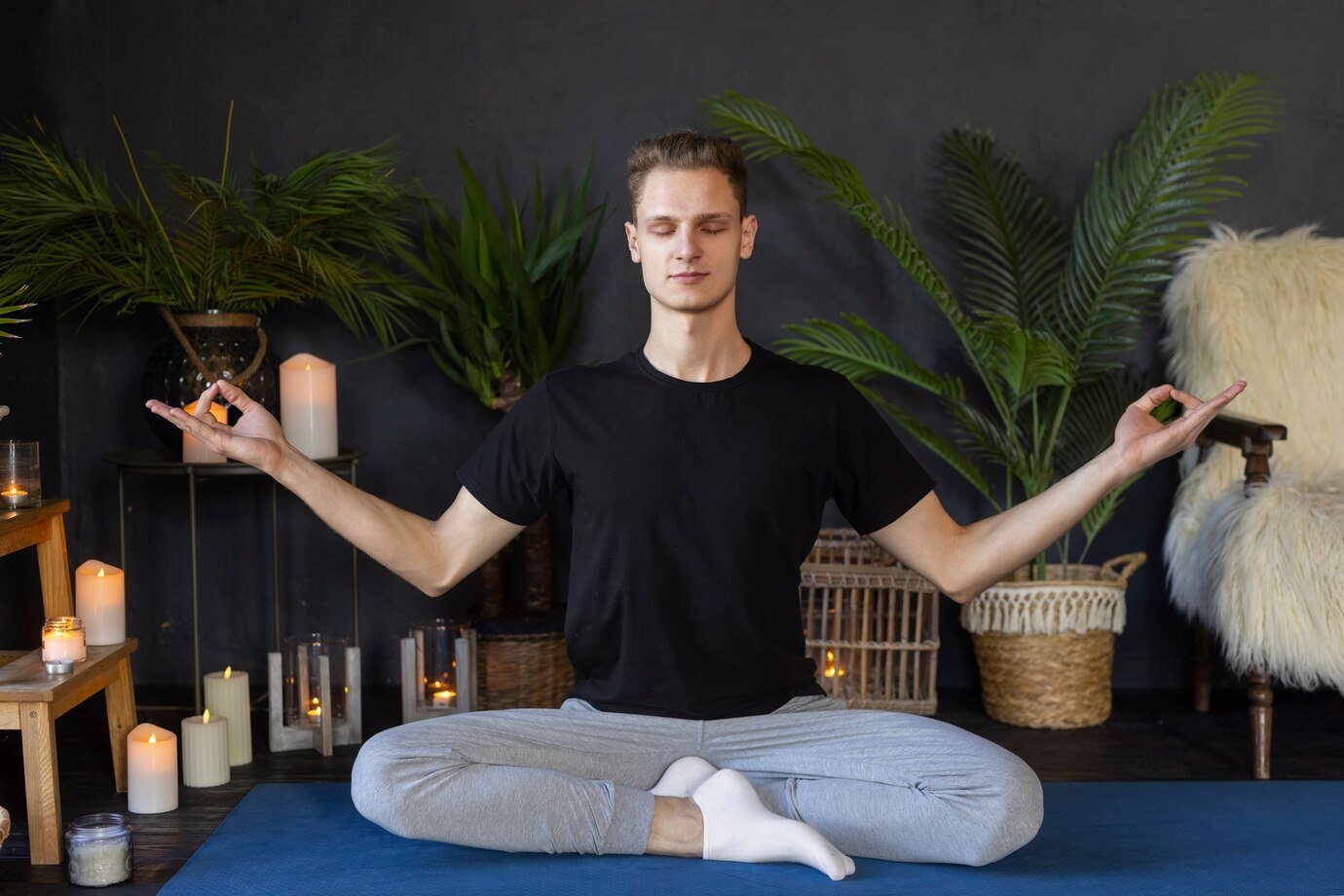In today’s fast-paced world, stress has become an inevitable part of our lives. Meditation offers a simple and effective way to combat stress, improve focus, and enhance overall well-being. If you’re new to meditation, this guide will help you get started on your journey to a calmer mind and healthier life.
What is Meditation?
Meditation is the practice of focusing your mind and eliminating distractions to achieve mental clarity and emotional calmness. It’s not about forcing your mind to be silent but gently guiding your thoughts and attention. With regular practice, meditation can help reduce stress, enhance concentration, and even improve physical health by lowering blood pressure and boosting immunity.
Setting Up a Meditation Space
Creating a dedicated meditation space can make your practice more enjoyable and consistent. Here are some tips:
- Choose a Quiet Area: Find a spot where you won’t be interrupted. This could be a corner of a room or even a comfortable chair.
- Keep It Simple: Add a cushion, a small rug, or a chair for comfort.
- Soothing Ambiance: Consider adding candles, incense, or soft lighting to create a calming environment.
- Declutter: A tidy space helps create a clear and focused mind.
Breathing Techniques
Breathing is a fundamental part of meditation. Simple techniques can help you stay grounded and focused:
- Deep Breathing: Inhale deeply through your nose for a count of four, hold for four counts, and exhale slowly for six counts.
- Box Breathing: Inhale for four counts, hold for four counts, exhale for four counts, and hold again for four counts.
- Counting Breaths: Focus on counting each inhale and exhale, starting from one to ten, then repeat.
These techniques help calm your nervous system and bring your attention to the present moment.
Guided vs. Unguided Meditation
When starting out, you may wonder whether to use guided or unguided meditation. Here’s a quick comparison:
- Guided Meditation: Perfect for beginners, guided meditations use audio or video instructions to walk you through the process. Apps like Headspace or Calm offer great resources.
- Unguided Meditation: This involves meditating without external guidance. You can sit in silence, focus on your breath, or use a mantra.
Experiment with both to find what works best for you.
Tips for Consistency
Building a habit of meditation requires consistency. Here are a few tips:
- Start Small: Begin with 5–10 minutes a day and gradually increase the duration as you become comfortable.
- Set a Schedule: Choose a specific time, such as mornings or before bed, to make it part of your routine.
- Use Reminders: Set alarms or use sticky notes as reminders to meditate.
- Track Your Progress: Use a journal or app to track your sessions and celebrate milestones.
Common Challenges and Solutions
Many beginners face challenges when starting meditation. Here’s how to overcome them:
- Restless Thoughts: It’s natural for your mind to wander. Gently bring your focus back to your breath or mantra.
- Discomfort: Experiment with different seating positions or use cushions for support.
- Impatience: Results take time. Focus on the process rather than immediate outcomes.
- Inconsistent Practice: Pair meditation with an existing habit, like brushing your teeth or drinking coffee, to build consistency.
Conclusion: Making It a Habit
Meditation is a powerful tool for stress relief and personal growth. By starting small, creating a dedicated space, and practicing consistently, you can make meditation a natural part of your daily routine. Remember, it’s okay to have off days—what matters is showing up and trying.
Start your meditation journey today and experience the transformation it can bring to your mind, body, and spirit.
The Beginner’s Guide to Meditation for Stress Relief







